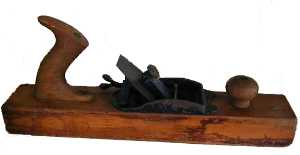
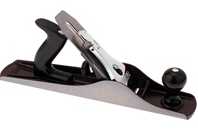
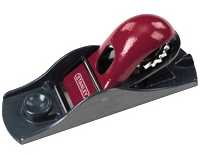
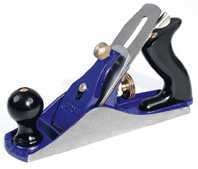
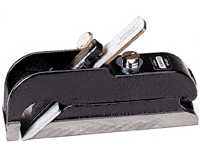
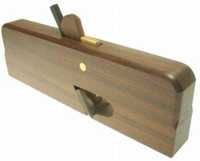
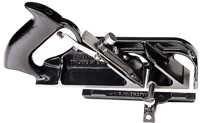
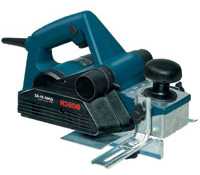
2. Explain when a jack plane would be used in stead of a smoothing plane.
| CLICK HERE FOR INDEX PAGE | ||
| TYPES OF PLANE | ||
| V. Ryan © 2002 - 2009 | ||
| PDF FILE - CLICK HERE FOR PRINTABLE WORKSHEET | ||
| A large range of planes are available and they are used for different purposes. The body of a plane is made from high grade cast iron with the cutters being tungsten made from vanadium steel. The earliest known examples of planes are from the Roman era but even today they are used for the same purposes - to smooth rough surfaces or the plane down the thickness of a piece of wood to the required size. | ||
| EXAMPLES OF PLANES | ||
 |
WOOD BLOCK PLANE: Although this is a very old design they are still used today to remove a large amount of wood. This is due to the fact that they are lighter than steel planes and therefore they can be used comfortably for longer periods. | |
 |
JACK PLANE: This is the steel equivalent of the wooden block plane. It has a steel body and because it is heavier than the wood block plane it is easier to hold down on the surface of the wood being planed. It is used to plane longer pieces of wood. | |
 |
SMALL BLOCK PLANE: This is a small version of a wood block plane and it is used for light work such as producing 'chamfers'. It is normally held and used in one hand. | |
 |
SMOOTHING PLANE: A shorter version of the steel jack plane. It is used for general work such as smoothing short pieces of wood. It is lighter and smaller than the jack plane | |
 |
BULLNOSE PLANE: This is used to plain right into corners. The blade can be seen to go almost up to the end of the plane's body and consequently very little material is missed in a corner. | |
 |
REBATE PLANE: Used for producing shoulders or rebates. A good example is a base to a jewellery box which is rebated into the sides. (See Lapped Joint) | |
 |
COMBINATION PLANE: Used in a similar way to a rebate plane. It can be used for creating a shoulder/rebate on the edge of a piece of wood. This plane has an advantage over the rebate plane as it is adjustable for different widths. (See Lapped Joint) | |
 |
MACHINE PLANE: This is favoured by DIY enthusiasts as it saves time. A blade revolves at high speed and as the machine plane is pushed across the surface of the wood - it is planed. A big disadvantage of these planes is that they are potentially very dangerous if misused. Also, sometimes the finish to the surface is not as smooth or precise as a hand held plane being carefully used. | |
| 1. Explain
the proper use of a plane
2. Explain when a jack plane would be used in stead of a smoothing plane. |
||
| CLICK HERE FOR 'HOW TO USE A SMOOTHING PLANE' | ||
| CLICK HERE FOR EQUIPMENT AND ACCESSORIES INDEX | ||